Local power is the engine for change that can really produce progress today while reshaping the playing field for what’s possible at the state and national level down the road.
Melanie Allen
In this episode of Metro Blueprint, Xavier de Souza Briggs, senior fellow at Brookings Metro, Melanie Allen, founding co-director of the Hive Fund, and Robert “R.J.” McGrail, director of the Accelerating Community Investment initiative at the Lincoln Institute of Land Policy, discuss how federal policy affects our energy future and what it will take to bring affordable and resilient energy to everyone.
This is the final episode of season one of the podcast.
- Listen to Metro Blueprint on Apple, Spotify, or wherever you like to get podcasts.
- Watch episodes on YouTube.
- Learn about other Brookings podcasts from the Brookings Podcast Network.
- Sign up for the podcasts newsletter for occasional updates on featured episodes and new shows.
- Send feedback email to [email protected].
Transcript
[“doors opening”; music]
PUENTES: Hi, I’m Rob Puentes, vice president and director of Brookings Metro. I’m also the host of Metro Blueprint, a podcast from the Brookings Podcast Network. Every two weeks a Brookings Metro scholar and a guest expert discuss ideas and action to create more prosperous, just, and resilient communities in America.
In recent years, few issues in urban policy and infrastructure have received as much attention as energy. It powers our lives and our economy. It creates jobs and is an important part of the cost equations that households and businesses across the country think about.
Under President Biden, Congress approved the biggest investments in renewable energy in our history. And for their part, President Trump and the current Congress have acted quickly to favor fossil fuels, freeze clean energy programs, and propose dramatic cuts going forward.
In this episode of Metro Blueprint, Xavier de Souza Briggs, senior fellow at Brookings Metro, Melanie Allen, founding co-director of the Hive Fund, and Robert “R.J.” McGrail, director of the Accelerating Community Investment’s initiative at the Lincoln Institute of Land Policy, discuss how federal policy affects our energy future and what it will take to bring affordable and resilient energy to everyone.
You can learn more about this podcast on our website, Brookings dot edu slash Metro Blueprint. This is the last episode of our first season.
And now, here’s Xav, Melanie, and R.J.
BRIGGS: Thanks, Rob. So given such large scale investment in recent years, and now the dramatic turnaround for energy policy at the federal level, what’s unfolding across the country? And what’s the outlook for the economy, for local leaders and communities, and for families? These are some of the questions we want to explore. Melanie and R.J., welcome to the show.
Melanie, for most people, you know, I think energy is about that confusing power bill we get and pay once a month. And for many folks, it’s a very costly bill. Or it’s about folks who come out in the hard hats when there’s been an emergency to get the lights back on—the heroic sort of face of the industry. But that’s how we think about energy.
And I want our listeners to have a really good sense of the very special vantage point that you and R.J. bring to this conversation, because in recent years there have been a number of innovative organizations, including nonprofit mission-driven ones like yours, that are trying to change our energy system for the better and to engage communities in a new kind of conversation as they do that work.
So I want to start with you. Tell us, what is the Hive Fund? Why was it created? What do you guys do?
[2:54]
ALLEN: Well, Xav, thank you so much, it’s an honor to be in conversation with you and R.J. today. And alongside Aaron Rodgers, I’m one of the founding co-directors of the Hive Fund for Climate and Gender Justice, and I am a self-labeled energy nerd. But as you mention, beyond expecting the lights to come on when you flip the switch, the extreme occasions when people are without electricity, or when they get those confusing energy bills, most of us don’t spend a lot of time thinking about energy.
But the energy system is the backbone of our country. And it’s also the backbone of our global connection. And at The Hive Fund, we raise money and make grants to groups, often those that are frontline groups most impacted by the energy system, either because of pollution, because of plants where they live, or because they’ve been energy burdened, and the cost of energy has become an issue for them. They have come together to try to create new solutions to help accelerate the transition from dirty energy to clean energy in a way that centers justice, redistributes power, and creates healthier and safer, more prosperous communities for everyone.
And so when I think about our grantee partners, they’re innovators. They’re innovators like Ajulo Othow, who lives in a rural community in North Carolina and a rural community that was having a lot of economic issues, but also where energy is very expensive. And she got together with her local utility and also with Black farmers and, you know, they designed a partnership in which Black farmers now get to host solar, distributed solar installations that help make the energy more reliable, mean that it is less expensive because it has to travel a shorter distance to get to the houses in this very expansive rural area that this this utility has to serve and where farmers are now making 10 times per acre what they would get if they were doing the crops that are usually grown in that area.
BRIGGS: R.J., I want to ask you the same question, just to level set a little bit. Tell us about the Accelerating Community Investments initiative. Why was it established? And what do you guys do?
[5:05]
MCGRAIL: Thanks, Xav, it’s great to spend some time with you and Melanie, I’m really looking forward to the conversation today. So I’d like to answer that question in two ways, I would say in part by talking a little bit about the Lincoln Institute of Land Policy. The Lincoln Institute is a private operating foundation, so we are not a grant maker. But we are a networker, researcher, networker and convener seeking to improve the quality of life through effective use, taxation, and stewardship of land. We’re really thinking about ways to help communities develop additive rather than extractive methods to build an economy that provides access to opportunity for all.
We launched this Accelerating Community Investment initiative to address deep-rooted disparities and mismatches in the American financial and economic systems, particularly around how capital’s invested in communities. We see a fractured financial system where capital flows are limited by policy choices, are limited by market failures, are limited lack of local connectivity and capacity to imagine a different way to deploy capital.
So we built this ACI effort to do two things really: to build a practitioner network to strengthen skills and relationships among leaders in the public and community sector; and also to conceive, develop, and help them deploy investable opportunities. And I know we’re gonna talk more about the uncertain and now more certain, but still less than desirable outcome of federal resources. But our work is about connecting impact and values aligned capital to the holders of those assets to communities to help to develop a better sort of pathway to use public finance tools as an impact as an impact lever for community change across asset classes, focused in particular increasingly over the last year on the energy transition.
[7:01]
BRIGGS: You each have such a special vantage point. I mean, now that we have a sense of it, I want to turn to that question, what’s at stake and for whom? R.J., I’m going to turn to you first on this one. You and I published a report earlier this year based on conversations with leaders across the country. The Lincoln Institute published this report. It’s also available through Brookings for folks who haven’t seen it yet. It’s called “Building an American Energy Future for All.” And we focused on the so-called community scale marketplace, typically renewable energy projects under one megawatt of capacity, like rooftop solar for a hospital, or public schools, or faith and community-based nonprofit facilities, or other installations. And we tried to highlight lessons gathered, again, from leaders all across the country, not just our own ideas here, from decades of deploying capital into other uses, things like affordable housing projects or other things that serve communities.
So we’re going to dig into the challenges of making this marketplace really effective and making it scale and making it truly inclusive. But R.J., I want to start with a simple question. What do you feel like you learned about the most important benefits of America having an energy system that’s a lot more widely distributed, it’s much more localized for producing and distributing energy and who’s enjoying some of the benefits of that now?
[8:26]
MCGRAIL: Yeah, thanks, Xav. I think we found out through that work that led to that publication that there are really a wide-ranging set of economic, environmental, and energy resilience benefits to a more widely distributed, localized system. And I think about those three buckets, you know, energy transition benefits, energy savings, lower cost for consumers, enhanced resilience and reliability, reduced emissions, right? There’s a whole set of economic and environmental resilience factors at play, like those things.
But, you know, additionally, there are core economic and community co-benefits, right? There’s job creation and economic development up and down the supply chain of these industries, both on the installation and the maintenance and operations side. Like, these are not your typical construction jobs where you measure the construction job and you have to put a time limit on it when you think about the impact of the project on a community because the construction workers work from day one of site prep to day end of project on vertical construction.
There’s a whole wide range of job creation and economic development outcomes and benefits that can be achieved. There’s a wide range of community engagement and local control. These distributed energy systems enable local decision-making which increases community involvement in decision-making which is a good outcome for communities.
I will say that those economic and community benefits and those energy transition and environmental benefits require a market-building effort. And that’s the one thing that I think we raised in the paper is that we need to think about market building activities that focus on access to capital, that focus on peer learning networks, that focus on the aggregation of project pipeline, and on the infusion of equity in all its forms, both financial and values aligned, more equitable distribution of these resources across the country.
[10:27]
BRIGGS: So you’re talking about a set of benefits, though, that are widely valued. Whether we’re reflecting them in national policy at the moment is something we will come back to, but a set of benefits of interest, whether you’re in a small town, in a big city, whether you are a small businessperson, just a family trying to save dollars and count on more resilient energy. Everyone hates power outages, and they can be deadly as we know. So this is high-stakes stuff, and this is a way of thinking of our energy system that I think is a lot more multi-dimensional than we’ve had in the past.
Melanie, I want to push us towards some of the things, too, that are newly sort of pressuring our system, like growing demand from, you know, data centers that power AI and that kind of thing, because we’re seeing a growth in demand for energy, but I want give you a chance to answer the same open-ended question that I put to R.J. How do you think about what’s at stake, and for whom, as we think about a system that works better, that’s more inclusive, that is more distributed in the ways we’ve been exploring?
[11:30]
ALLEN: So, we are living through one of the most significant technological transformations in human history. And that’s the transition from dirty energy that relies on oil and gas and fossil fuels that pollute communities where those fuels are drilled, refined, and burned for energy, and also contributes greatly to instability of our climate.
The system that we currently have means that there are people who don’t have the luxury of not thinking about energy because of the way that it impacts their health, their ability for their kids to play outside, because of the air pollution and water pollution. And that is really what’s at stake. It is the health and well-being of communities.
When I also think about what’s at stake, I think about reliability and resilience in the way that R.J. mentioned. I think of one of our partners, Ms. Doris down in Houston. We had a project there with Solar United Neighbors and an organization called West Street Redevelopment. And they develop what you call hub homes. Which means that on your block, there’s a home that has a solar system with battery. And in this area of Houston that is greatly impacted by floods and has seen its fair share of storms, it means a lot to have someone like Ms. Doris who has this hub home that you can rely on.
And I remember I think the week after it was installed, the power went out in Houston. And her neighbors saw through the window that she still had electricity. And what that meant was not only that people could come and charge their phones, but they could come with their medical devices. And in this moment, when there wasn’t reliable electricity, they were able to have that life-saving access to energy.
And so that’s what’s at stake when we’re talking about a more distributed solar system that relies on more renewable sources and, you know, that allows folks to have more control over what’s happening locally in their energy system.
[13:22]
BRIGGS: Well, if I think of the stakes and the potential that you’ve both outlined, I am left with this question, how do we scale more of these good things that the country so badly needs and that people are asking for in many different ways? This has become pretty contested stuff, to say the least. And it’s often tricky, it can be very complex to scale up something good even where most people support it. I mean, that’s just a fact. Melanie, what’s your take on this? What are the most important things that need to happen from your point of view to scale the kind of energy access, affordability, and resilience that we’ve been talking about?
[14:03]
ALLEN: There are so many opportunities in this moment. I’d be remiss if I did not mention that, you know, over the last four years, the efforts to really advance us and move us to a renewable and reliable energy system were turbocharged with the passage of the Bipartisan Infrastructure Law and the Inflation Reduction Act that recognize that the transformation of our energy system was not just going to give us a better energy future, but also offer all these economic opportunities as well.
But when I think about what this moment demands, what I’m seeing is that local power is the engine for change that can really produce progress today while reshaping the playing field for what’s possible at the state and national level down the road. And what that has looked like with us in talking to our partners to understand what’s possible in this moment is that people are talking neighbor to neighbor about the challenges that they’re having, about their electricity bills being too high, they’re experiencing maybe storms, floods that have definitely been more prevalent this year. And having these conversations, folks are able to break through the partisan divides, break through the vitriol and have real conversations about solutions that work and make sense for everyone.
And so what we’re seeing is the local level engagement with local cities, local city councils, talking and thinking about energy system, whether that means in a place like Albany, Georgia, in southwest Georgia, where they were able to get a million dollars for a pilot to do home energy retrofits that were invested by the city. They’re able to move things because people understand—your city manager is having a lot of the same energy challenges that you’re having. And that’s creating space for conversation, but it’s also creating willingness for us to try pilots.
One of the things that we’ve been able to support in a place like North Carolina has been supporting a rural electric utility in adopting and expanding inclusive utility investment, which is a fancy way of saying that we can upgrade your home in ways that it uses less energy. Most people are gonna pay their energy bills. But they’re even more likely to pay them if they are lower because we have upgraded or retrofitted the heating system in their home to make it use less energy, therefore making it cost less month by month. What we’ve seen in that instance is that it also lowers the cost that that local utility has to pay for energy. So that’s a win-win for both the customer and the utility.
[16:35]
The exciting thing that speaks to scale about this is after we were able to try it, get the data to prove that it works for everyone, our partners were able to elevate it as a model in North Carolina. And now the utility commission has required the monopoly utility that services most of the rest of the state to roll out a model that’s similar. And so that begins to get to scale.
We also have the local green bank, North Carolina Clean Energy Fund, that looked at the economic model and said, well, every rural electric co-op doesn’t have to create this on their own. We can actually create a financial product that folks can just subscribe to. And so what that means is that by the end of 2026, we’ll have a product where rural electric co-ops in both North and South Carolina don’t have to go through what Roanoke Electric did to really prove this product, but they can just subscribe to a membership and be able to roll that out.
And so that’s one example of a local solution being tried, tested, being able to elevate that story, but then bring partners in to bring it to scale. And that is what we need more of, but it’s gonna take nonprofit partners, municipal partners, folks like R.J. and yourself who have economic expertise, and even private businesses and partners from the business side to come together to really, really make the most of this moment.
BRIGGS: So far, I feel like you’re pointing to how much creative room there really is, not just need and support, but many different ways that we can scale this, we can bring this to reality. And I think you’re reminding us, these conversations often come back to this, creative ways to make these investments more affordable on the front end, that’s just fundamental to making this work, to kind of unlocking this potential. R.J., what’s your take on this? What do you think of as a few of the most important things needed to take this stuff to scale?
[18:27]
MCGRAIL: That’s a great question, but I like to sort of think about the broader systems level goals that need to happen to execute on this series of very, very important local projects. And I think what we identified as a theme in the paper that I think we’ve been talking about consistently is really, you know, a very, very small goal of transforming how public and private investment interacts with place. That’s not a small thing.
[18:50]
But I think it’s important to talk about that bolder, bigger, audacious goal. Like, we have for a century in this country let capital markets and their public entry points transform communities in ways that have had as much harm as they have had benefit. I think it’s very important for us to increase connectivity between asset holders and communities in need of new investment.
There’s a couple of ways that we need to do that. We need to develop ambitious and reasonable ways to improve the enabling environment in places—the policy, taxation, and regulatory schemes that exist in local communities that enable or don’t enable capital flows. And that can, if we can get that enabling environment better, facilitate the participation of new actors into markets.
I also think that we need to be thinking about work that is more scalable and replicable, helping participants in it, across the value chain, achieve the outcomes that they’re looking for.
And then I think, you know, ultimately, it’s about, to root the “so what’s next” question back in the the land of finance alongside the land of community, deeply, deeply held community need, if we can catalyze the development of new community-led and sourced investable opportunities, we’re going to create ways that capital lands in community and maximizes impacts on those communities. Positive impacts on residents, positive impacts on businesses, positive impacts on the broader set of public policy goals around environmental and energy transition.
[20:31]
BRIGGS: What’s so encouraging to me about this conversation we’re having is that you have each touched on not only the breadth of folks and entrepreneurs and communities who can benefit immensely from creating a better energy system, one that’s measurably better in all the ways we talk about, but also how broad a spectrum of players can help take this to scale, help bring this into being. Everyone from state and local governments, tribal governments, we should add, community organizations, the education sector, lenders, investors of other kinds.
For more on all of this, by the way, check out the Hive Fund, check out Accelerating Community Investments. These guys have very terrific material on their websites. Lots of great working examples. Terrific work being implemented on the ground.
So you’ve talked about a wide range of players that can make a difference. No one player holds all the cards. And yet we have acknowledged once or twice in the conversation that this big shift in federal policy matters. And I want to turn us to that more squarely now, talk about federal policy, spending, and regulation and bring that squarely into view.
Earlier this year, as soon as President Trump was inaugurated, he issued an executive order directing the cancellation of many clean energy programs and offices. He even directed federal agencies to claw back, as they say, grant money that was already under contract, that had been obligated by the Biden administration, for example, through the EPA’s Greenhouse Gas Reduction Fund program, a large-scale, significant new program. He also rescinded President Biden’s Justice 40 executive order, which called for directing at least 40% of the benefits of new investments like clean energy to communities that historically have been most affected by pollution and most underserved.
Melanie, you were engaged with the EPA and other agencies, too, like Energy and the IRS around the tax credits to implement and to help the federal decision-makers think about how to get these resources to ground in the most effective way. So I want to turn to you, how’s the field responding so far to this big federal reversal? And if a big drop in federal funding is the new normal, at least for the foreseeable, how is that likely to affect the kinds of changes we’ve been talking about?
[22:59]
ALLEN: We are fortunate to be in deep partnership with folks who have been very engaged in the whole process of rolling out and shaping the Inflation Reduction Act. And, you know, when I think about this moment and when I think about where people are, I think they are committed. I think what that looks like is, one, fighting back against illegal freezing of federal funds, particularly those that have already been obligated.
Because I think what’s at stake is not just those individual projects that may be supported with those resources, but it is this question from administration to administration, can we trust and have faith in the commitment and the agreements of the federal government as signed through these binding legal agreements?
And so we’ve seen deep commitment to making sure that the administration that carries out these commitments that were made in alignment with the law. Especially because there had been no breach of these agreements or contracts. So that’s one, people are committed, they’re fighting back, and using the courts as a recourse.
But I think what is at the core of so much of the moment surrounding the Inflation Reduction Act and Justice 40 is this audacious principle that affordable renewable energy is and should be for everyone. And I think the exciting thing is that that is a principle that many people held before we saw that level of legislation that was passed just about four years ago.
And when I talk to our partners on the ground, what I am buoyed by is that time and time again, they say we didn’t start doing this work with the promise of federal funding. Be clear that relationships were fortified, there were new connections and coalitions that were built because of the promise of this federal funding, but people are still committed.
And so I think what that means is making the most of what is still accessible. There are still tools in our toolbox from some of those legislations that passed. Solar for All is still rolling out. I talked to a partner in one of our states and they’ve received all of their funds and fully planned to and have already begun implementing that program. And so that’s really, really exciting.
BRIGGS: Melanie, can say another word about that, Solar for All? I’m glad you touched on it. Because I think some folks who are following the headlines probably think, like, oh, this stuff’s been canceled, it’s just gone. Take a moment so our listeners understand what it is enabling and why it’s important that it continues to operate.
[25:29]
ALLEN: Absolutely. I think you mentioned earlier the Greenhouse Gas Reduction Fund, and Solar for All was one of the three programs through the Greenhouse Gas Reduction Fund that awarded $7 billion to about 60 grant recipients across the United States to create new or expand existing solar programs that are specifically targeting and serving low-income communities. And so when we talk about this idea of accessibility and really this audacious idea that clean and renewable energy is for everyone, then Solar for All is a great example of the type of program that really seeks to make that real.
BRIGGS: Got it. I think it’s really helpful to put a spotlight on that. R.J., how about you? What are you seeing out there in the market now? Where is the Trump effect, so to speak, very clear? And where is it not changing things, perhaps as dramatically as folks have feared?
[26:20]
MCGRAIL: I would like to go back just for one second to something Melanie was just saying, because I think it’s so important. It doesn’t fit into the neat Trump effect, oversimplified public messaging to say the entire $27 billion Greenhouse Gas Reduction Fund has been rescinded. A, that’s a lie. Twenty of the 27 has been pulled back in one form or another, as Melanie just pointed out.
And I think the other thing that’s really important as we talk about the Trump effect—and this is teeing up one of the things that I think we’re seeing in community—is that $27 billion is a seismic, first-ever significant public commitment to the energy transition. It was one-tenth of the commitment that was made in the tax code to fund the same types of projects.
And I bring that up for a couple of reasons. One is to say that full stop, losing 20 billion dollars that was going to be directly targeted to the kind of communities that listeners of this podcast and the people that we all work with every day cared the most about is a terrible tragedy that should be pursued with all appropriate legal remedies and all the ways that Melanie described.
But I think it’s also important for listeners to understand that 10X of the capital needed to achieve the energy transition is sufficient to the whole amount, but there was about 380 billion dollars in tax credit expansion of one form or another also included in the bill. And I bring that up because it’s my first point about what I’m seeing and kind of what’s happening in the post-January of this year inauguration public conversation.
The budget reconciliation package was signed the afternoon of July 4th, 2025. If a project starts any time before July 4th of 2026 anywhere in this country that seeks to use those expanded tax credits in all of their various forms, they will get 100% of those tax credits.
You know, as Melanie was saying, three programs Solar for All, block grants to states to do to do that kind of work that she so aptly described. The other two programs were for big capital aggregation activities and were for green lending. And both of those project sponsors needed to go out and identify hundreds of millions of dollars in pipeline. That pipeline exists today. And some of the things in that pipeline are financeable today and certainly are financeable with a large federal tax credit that those projects can fully access for a whole another year minus a week-and-a-half.
[28:50]
Secondarily, I think it’s also important to recognize here that governors and mayors still need to deliver on an energy transition for the economic reasons that it needs to happen. I understand the impetus and the decades of work in the environmental justice community that led to us talking about the energy transition as an environmental justice intervention, which it is, but it is also an economic intervention.
I’m not saying don’t talk about the environmental justice outcomes because those are vitally important to community, but it’s okay to talk about them second. If you want to try and navigate a project through these challenging, uncertain times, talk about the economic benefits.
I think, Xav, you and I cited, it was somewhere in the Midwest, there was an example of a very, very typically American rural community that is in love with the notion of distributed solar and wind farms and solar panels. And that work all still happens because those voters, despite the choices that they may or may not have made in a national election a year and a half ago, are still saying that I want the lights to come on when I flip the switch. I want my Nana’s diabetes medication to be able to be accessible to her if there’s a multi-day power outage in my community. Figure it out for me, public sector, figure it out for me.
BRIGGS: R.J., fair enough, you’ve reminded us there’s time remaining. The federal reconciliation bill, especially its tax provisions, allows for that. So there’s time to get a great many projects still financed. I know there’s a rush going on, at least for folks that are well aware of that. Melanie reminded us, too, that there are programs that have endured, good sized ones, doing really good work and throwing off lessons, too, that I think we can use to raise awareness around these issues.
I want to ask you, because you’ve both painted a picture of such enormous potential, a lot of it yet to be realized, but we see the signs of it on the ground, they’re very real. And none of this is inherently partisan, as we know. Nothing we’ve been talking about, even though there have been real political fights. I want turn us, as my last question, to the matter of the critical work ahead. And R.J., I’ll start with you. We’ve talked about building a larger market. We’ve talked about how much opportunity remains in spite of the change in much federal policy of late. But what needs to happen that hasn’t happened? I want to say it in a very simple way. You know, what’s your punch list, so to speak? What needs to happen that hasn’t happened and who needs to do it?
[31:28]
MCGRAIL: You know, there’s a couple of things that come top of mind for me. One is that I do think we need to bridge the gaps between the existing capital that wants to invest in utility-scale solar. Do the case making around an investment opportunity to be able to find private market capital that can come in through a public instrument or otherwise to help to replace some of these lost resources. I think that that work needs to focus on the broadest possible implementation.
You know, there’s a couple of things that we haven’t talked a ton about who does this work? And I think that that’s one thing that’s important to consider moving forward. You know when we think about the workforce transition requirements of who’s putting the panels on the roof and who’s doing the interoperability and connectivity work? And we’ll need to figure out a way to use public or other resources to prepare the workforce to do the work, because that’s one of the most direct ways that you can see those economic co-benefits.
I think that we need to aim for more resilient, equitable, and sustainable energy systems, obviously. That means fostering better community engagement, it means fostering better policy framework. I think policymakers have a role here at the state and local level to design and enact supportive regulatory and incentive environments, right?
And some of this work is happening in places like Michigan where you’re taking a million dollars of Solar for All money and going out and 10X leveraging it with a bunch of local CDFIs and local donors and then all of a sudden with a million dollars of public dollars, you’ve got a 10 or 20 million dollar pilot to go put a loan pool together to help some of those Georgian or North Carolinian homeowners figure out how to access capital in a way that lets them participate in the energy transition.
[33:20]
And I think that’s the key thing, Xav, you know, like who’s doing what. The sub-national governmental sector has a key role to play here in terms of kind of being the organizing trusted local entity because, you know, Melanie knows this better than anybody with the years of investment that the Hive Fund has made. Like nobody’s going to trust the outside smart expert from New York or Chicago or D.C., and they might trust their local government a little bit more than they do their national government. So I think there’s a role for state and local government to play both on the rulemaking and policy side. And also on the, this is the person that I see locally that represents the government to me.
I think that there’s a role for people in the networks operation space, like the work that the Hive Fund does, like the work that that some of the other partners that we talk through through the process that led to the development of our paper. And I think there’s a significant role for private capital to recognize that there is an upside opportunity that can deliver both significant economic return for investors and transform the way that America produces, distributes, and holds its energy. Because if we’re building a 21st century economy, we can’t do it on a 19th century energy infrastructure, period, end of sentence.
BRIGGS: It’s really helpful, that’s quite a punch list, but again, there’s room for lots of different kinds of players to contribute. I underline, one thing that you said, and that is just to remind people of just how many cards state governments alone, for example, hold in this picture. Not to put it all on them, but it’s come up again and again in our show today. Melanie, you referred earlier to the North Carolina green bank, other states have them as well. States are labor regulators. They’re the biggest infrastructure investors in the country, period. They play a huge role in utility regulation, of course, and touch this picture in so many other ways. And that’s just one example of an actor with a lot of cards. But Melanie, I’m not looking to steer you in any way. What’s your wish list, punch list, who needs to do what?
[35:21]
ALLEN: Well first I agree with so much of what both of you have shared and cannot emphasize enough the role of state and local government. At the Hive Fund, we focus in the U.S. South with priority states of North Carolina, Georgia, Texas, and Louisiana. And we can see, and we do see in all of those states, bright spots where projects are moving forward, where momentum is being kept. That means there’s opportunity in every state because we literally operate in the belly of the beast.
What I would say is on my punch list beyond kind of looking at the state and local governments and their roles, there’s a huge role for community-based organizations and civic engagement organizations, civic society. One of the challenges, I think, with our energy system is that so often we have thought of these as kind of our individual problems, either when power goes out, it’s just my neighborhood, when my energy bill is too high, it’s something that I did wrong. And we are trying to solve for a systems issue.
And so some of the most powerful work that community-based organizations are doing is having a conversation that really invites folks into this discussion of how do we make systems-level change, and stop really having shame around a high energy bill that may mean that someone has fallen behind on paying their electricity? Because there’s a systemic failure there. And our ability to think of this in a systems lens creates opportunity for us to innovate in a way that serves everyone.
Connected to that is we’ve got to maintain the relational infrastructure and the infrastructure for innovation. I think over the last four years, one of the most powerful things that we’ve seen, and R.J. alluded to this in many ways, has been people with lived experience of what an energy system that doesn’t work looks like and their dreams, their thoughts, their insights, and their strategies around how it should be changed.
And then folks who have lots of experience in financial markets or systems coming together and shaping products that then not only serve communities and serve everyone, but also put us on this path to building this new market that, again, is not just for folks who can afford solar out of pocket on day one, but really speaks to the systemic nature of what it’s gonna take to make a transition and that renewable energy is for everyone.
[37:40]
R.J., I want to build on something that you said. One of the things that, you know, excites me in this moment is that so many of our Hive Fund partners have always told this story, engaged in this work through the lens of the economic issue at hand, what it means for their communities.
And I think we’ve often failed to think about the many ways that the energy system impacts our lives. I talked a little bit about, you know, making sure you have reliable energy because it’s important for medical devices. But I remember early on when we were making grants and there was a challenge in a rural energy system. I ended up speaking with a grandmother who had custody of her grandchildren. And the utility made an error. She had a bill that was in the thousands of dollars because of the error. And they turned off her electricity. And what that meant is that she actually lost custody of those grandchildren, because you have to have working utility, right?
And so I think having these conversations in a way that really deals with them in a systemic nature also allows us to see the many ways that energy system impacts our lives, and to see it as a public good that is necessary for, I think, really all of us to live the rhythm of our lives.
[38:55]
And there are two more things that I want to touch on. And we talked about AI earlier, but I think what we’re seeing is a real opportunity. And there are some folks, I think Microsoft is one, who are kind of leading in this conversation around, like, what do community-based renewable energy systems look like? And what’s the opportunity to have more responsible approach to AI in partnering with communities in that design? And I think that’s a really important opportunity. It’s gonna be necessary. And I know we’re talking about energy here, but I think the energy use and water use for AI are gonna be a long-term threat to communities.
And so I think having those conversations but also making sure that the corporate community is a part of those conversations and that community members, community-based groups, particularly that are neighbors for these corporations and these data centers, are able to be at the table, but not just at the table, but to be there as co-strategists. And too often they’re there after a decision has already been made, but really to have them at the tables as co-strategists is gonna be really essential to moving forward.
The last thing that I’ll say is that I think everyone wants clean air, everyone wants clean water, and to be able to work outside. And I think what we’re working towards is where we don’t just want that for ourselves, but we want that for everyone else. And what we’ve seen is this work at the local level, in this moment in particular, where people are talking neighbor to neighbor, is creating opportunities for folks to kind of break through the partisan divide and have these conversations that take us to common sense solutions.
And so I think that that’s really what we’re working towards, is to be able to break through in this moment, because what we know is that there’s bipartisan support for this when we talk to people outside of these politicized spaces. And so, I think creating the opportunity to grow that so that it actually shapes the decisions that we’re making and is not, like, the best kept secret.
BRIGGS: I really appreciate how you’ve both given us a picture that is so much richer when it comes to understanding energy and who can shape it. I mean, it’s public and it’s private sector and it’s nonprofit or social sector. And you’ve given us such a fuller view of that. And you’ve also, I think, emphasized a far more empowered view of energy, of not settling for what we’ve had, of knowing we can have better, and feeling like we can create it together. And that is just super inspiring, and I think is going to really help our listeners understand how to act on these issues.
We’re going to leave it there. That is our show for today. Please stay tuned for future research on the range of questions we’ve talked about, including what it will take to bring affordable and resilient energy to everyone, how federal policy affects our energy future, and the big implications of energy for so many things that touch all of our lives from local economic development, good jobs, small business opportunity, but also transforming entire industries as Melanie and R.J. talked about, and for community health and wealth and much more.
Melanie, and R.J., thanks so much again for joining me.
ALLEN: Thanks for having us.
MCGRAIL: Thanks for having us, Xav. It’s always good to get a chance to spend some time chatting with you and with Melanie. Appreciate it.
[music]
BRIGGS: You can learn more about this and other topics by visiting Brookings dot edu slash Metro.
PUENTES: Metro Blueprint is a production of the Brookings Podcast Network, found online at Brookings dot edu slash podcasts. Thank you for listening.
My thanks also to all the scholars and guests for sharing their insights and expertise, and to the team at Brookings that makes this podcast possible including Fred Dews, producer; Erin Raftery, associate producer; Gastón Reboredo, audio engineer; Daniel Morales, video editor; Leigh Balon, Brookings Metro’s director of communications; Carie Muscatello, our graphic design and web publishing manager; as well as our government affairs and promotion colleagues in the Office of Communications. Katie Merris designed the beautiful logo, and Phoebe Copeland recorded the doors audio.
For more information about us, please visit Brookings dot edu slash Metro.
I’m Robert Puentes.
[“doors closing”]
The Brookings Institution is committed to quality, independence, and impact.
We are supported by a diverse array of funders. In line with our values and policies, each Brookings publication represents the sole views of its author(s).

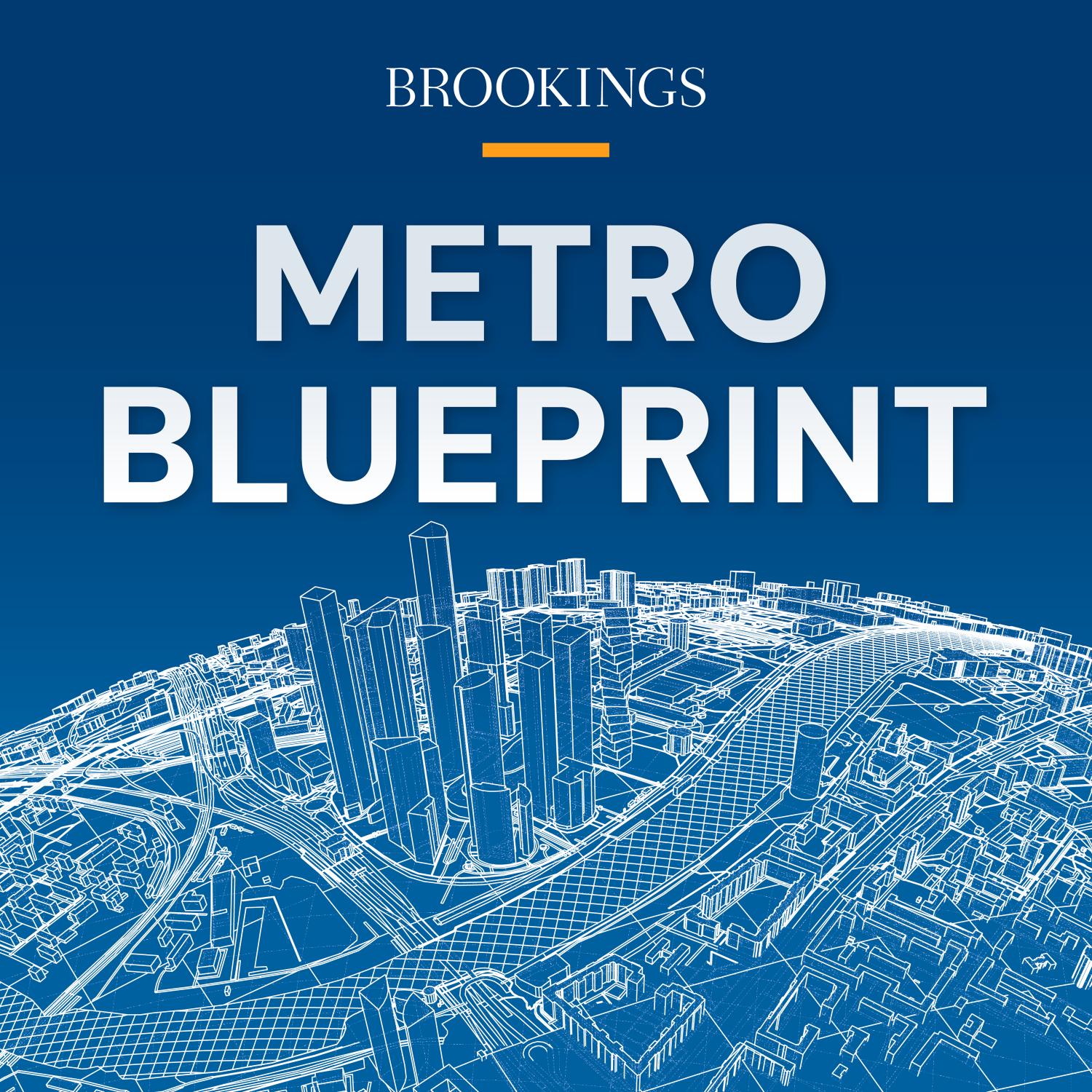
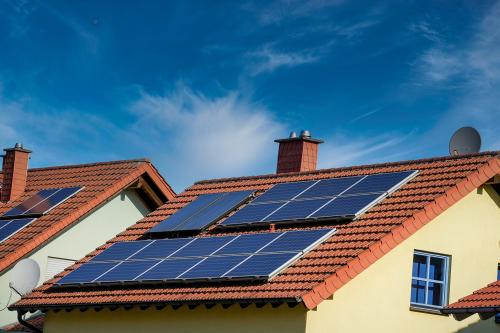
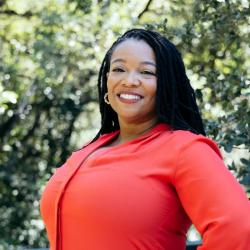
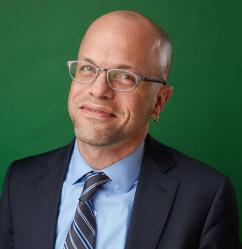
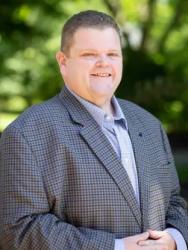
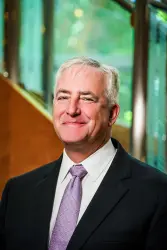
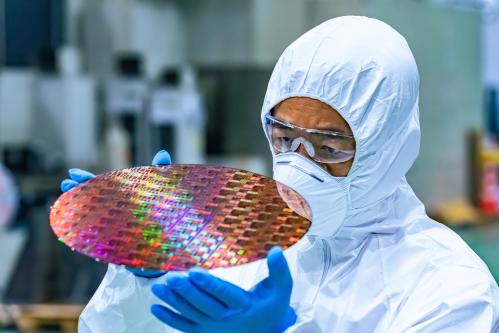
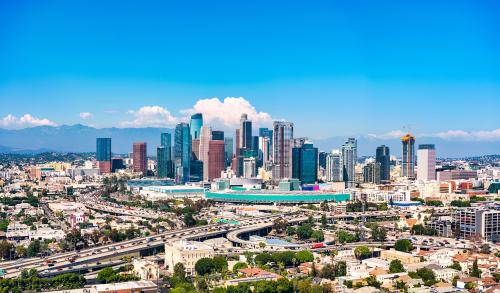
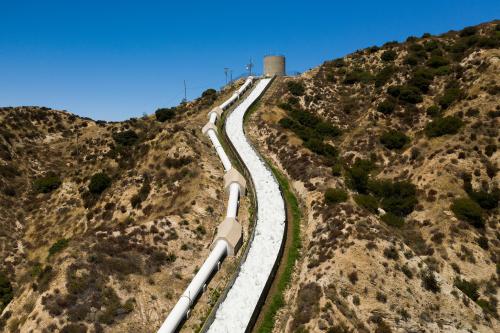
Commentary
PodcastHow local leaders and communities are leading the transition to clean energy
Listen on
Metro Blueprint
July 30, 2025